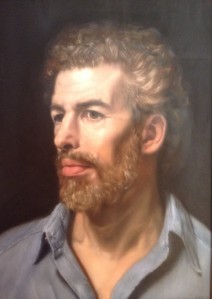In-Sight Publishing
Born to do Math 21 - Codeless Information
Born to do Math 21 - Codeless Information
Scott Douglas
Jacobsen & Rick Rosner
March 28,
2017
[Beginning of recorded material]
Rick Rosner: Then I
was thinking, “What if there could be something like codeless information that
is purely associative?” Maybe, that’s more efficient.
Scott Douglas Jacobsen: That’s different than minimized information as
well, or minimized code. So in general, the previous models of artificial
intelligence, or simply computer code, were super long in trying to code for
every single possible problem. So that you could have an appropriate solution
to it. At the same time, the more modern ones minimize that, and allow the
computer to learn for itself based on its much simpler set of algorithms.
So instead of hundreds of thousands, even millions, of lines of codes.,
you have a couple hundred. Google DeepMind with this minimized model has great
success. What you’re talking about something even further, it is codeless code.
RR: I don’t know because I
don’t know much about the Google deal. I don’t know much about anything. But
when you allow a system to build its own set of equivalences, which seems to be
what Google translate is about. There may be no zero code way to do stuff, but
this “minimized code” that you’re talking about.
SDJ: I made the term. I invented term [Laughing]. I did not use it from
a professional.
RR: There may be—instead of
having explicitly codified code, computers don’t comprehend anything they’re
processing. They work according to rules. But if there are systems that work on
more global grasping of stuff. That may incorporate a more efficient, more
explicit, less code heavy form of associative coding or information, or
something that approaches codelessness.
[End of recorded material]
Authors[1]

Rick Rosner
American Television Writer
RickRosner@Hotmail.Com
Rick Rosner

Scott Douglas Jacobsen
Editor-in-Chief, In-Sight Publishing
Scott.D.Jacobsen@Gmail.Com
In-Sight Publishing
Endnotes
[1] Four format points for the session article:- Bold text following “Scott Douglas Jacobsen:” or “Jacobsen:” is Scott Douglas Jacobsen & non-bold text following “Rick Rosner:” or “Rosner:” is Rick Rosner.
- Session article conducted, transcribed, edited, formatted, and published by Scott.
- Footnotes & in-text citations in the interview & references after the interview.
- This session article has been edited for clarity and readability.
- American Psychological Association. (2010). Citation Guide: APA. Retrieved from http://www.lib.sfu.ca/system/files/28281/APA6CitationGuideSFUv3.pdf.
- Humble, A. (n.d.). Guide to Transcribing. Retrieved from http://www.msvu.ca/site/media/msvu/Transcription%20Guide.pdf.
License
In-Sight Publishing and In-Sight: Independent Interview-Based Journal by Scott Douglas Jacobsen is licensed under a Creative Commons Attribution-NonCommercial-NoDerivatives 4.0 International License.
Based on a work at www.in-sightjournal.com and www.rickrosner.org.
Copyright
© Scott Douglas Jacobsen, Rick Rosner, and In-Sight Publishing and In-Sight: Independent Interview-Based Journal 2012-2017. Unauthorized use and/or duplication of this material without express and written permission from this site’s author and/or owner is strictly prohibited. Excerpts and links may be used, provided that full and clear credit is given to Scott Douglas Jacobsen, Rick Rosner, and In-Sight Publishing and In-Sight: Independent Interview-Based Journal with appropriate and specific direction to the original content.
No comments:
Post a Comment